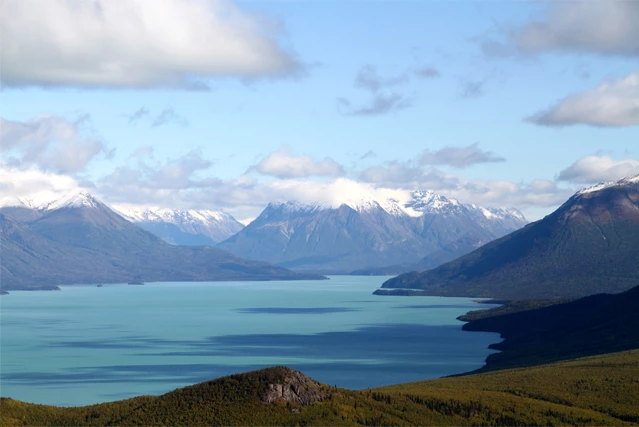
M. Richotte The water of Lake Clark National Park and Preserve is clean and cold, running through a complex network of rivers, lakes, and groundwater systems. Water rich, the park protects the headwaters, spawning grounds and water quality for North America's most abundant salmon runs in the Nushagak and Kvichak Rivers. In the Kvichak watershed, lakes and rivers flow into Lake Clark, which in turn enters Iliamna Lake via the Newhalen River. Iliamna Lake, just down river from Lake Clark, is North America's largest spawning grounds for sockeye (red) salmon and is the most prolific system in the Bristol Bay fishery. The park, including Lake Clark and surrounding lakes and rivers support over two hundred thousand spawning sockeye salmon per year. The Kvichak watershed is the world's most productive spawning and rearing habitat for economically important sockeye salmon. About 50% of the sockeye salmon caught in Bristol Bay spawn in its lakes and rivers. This represents 33% of the entire U.S. catch, and 16% of the total world catch. One of the primary reasons Lake Clark National Park and Preserve was established was to protect a portion of the Bristol Bay watershed for the perpetuation of the sockeye salmon fishery. By protecting these waters, the National Park Service helps sustain the Alaskan economy and culture. This is the land of lakes. Lake Clark is 42 miles long, 860 feet deep, and covers 128 square miles. It's the sixth largest lake in Alaska. But it is only one of a string of spectacular turquoise gems studding the western boundary of the Chigmit and Neacola mountains. Lake Clark, for example, supports both an annual congregation of migrating swans resting on their way north and the only known salmon dependent wolf pack. Rivers, though, are known as the lifelines of the ecosystem. Many rivers originate from glaciers within the area and drain into Cook Inlet or into lakes in the park and preserve. Spawning salmon run up rivers and streams from both Cook Inlet and Bristol Bay feeding nutrients into the ecosystem. Bears, wolves, and other wildlife migrate along the rivers and lake shores in search of fish. While all of the park's waterways are truly wild places, the Mulchatna, Tlikakila, and Chilikadrotna are designated as National Wild Rivers. |
Last updated: May 28, 2017
